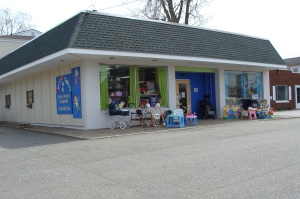How organized are your closets? Most closets are overfilled with clutter. This post contains some do-it-yourself storage ideas for organizing closets, especially for people who live in older homes that have very few and smaller closets.
Geralin Thomas has eight years experience as an organizing consultant and has her own business, Metropolitan Organizing (www.metropolitanorganizing.com). She is one of the professional organizers who regularly appears on A&E TV’s show “Hoarders” and has been published in many national magazines. Her closet organizing tips were recently featured on the Nate Berkus Show (http://www.thenateshow.com/tipsandtools/detail/weekend-warrior-clutter-plan).

No matter who you are, closet clutter is often hard to manage. If you have an older home with only a few, tiny closets, it can make the situation even more challenging. When storage space is scarce, your closets often have to hold a lot more than just your clothes. Here are Geralin’s answers to a few of my questions on the subject:
Karla: Interior lighting can often be challenging in closets in older homes because of a lack of wiring. Do you have any creative solutions for how to add a bright light?
Geralin: While a lot of designers will disagree, I encourage clients to keep their closet walls and carpets very light and bright. Some of the hardware stores carry do-it-yourself gadgets that are perfect for dark closets. Experiment with the stick-on, battery-powered lights if you can not afford to hire an electrician and purchase lighting for closet interiors. Also use mirrors on closet walls and doors since they reflect light.
Karla: Are there any inexpensive products that you have worked with that work especially well in small spaces?
Geralin: I try to encourage people to NOT go buy more products and use what is already available in their homes. If you happen to have “orphaned” Rubbermaid containers without lids, use the bottom part of the containers to store socks, hair accessories, scarves, belts, etc. Foam or flocked pant hangers, with “arms” that swing open, are great for hanging swim goggles and drawstring bags in kids rooms. Magnetic strips (used for knives in kitchens) are a great place to hang keys, pet collars, etc. If your dentist gives little plastic zippered pouches (containing a new toothbrush, toothpaste, floss) recycle those. Stash headphones, cords and cables in them.
Karla: Any advice especially for closets in children’s rooms, where you often have to organize things like toys, games, art supplies, and clothes?
Geralin: Go vertical. Vertical is visible and horizontal is hidden. That means incorporating pocketed, hanging devices that kids can reach and see. Do not use deep, lidded toy boxes – shallow and open is better so they can easily toss their toys in. A horizontal, slat rail system is nice for hanging buckets of pens, pencils, markers, and other items that normally clutter your horizantal surfaces. Products like this have a cool, industrial feel and are usually indestructible. Look at garage organizing products for inspiration.
Karla: On Nate’s show you included some great tips such as using two rods instead of one, installing shelves above the top rod for sweaters, and getting in the habit of cleaning out your closets on a regular basis. Do you have any additional tips especially for people who need to make a small closet mult-functional?
Geralin: Look in your hamper at your dirty clothes. Chances these are your very favorite clothes that get worn over and over again. Focus on keeping your favorites and letting go of extras that rarely get worn. If you have to store non-wardrobe items in your closet, try to use perfectly square, clear containers or color coded containers so that you can see what you have. Square containers fit better than odd-shaped containers and are a much more efficient use of space. Try to find containers with side openings (flap-style) so you do not have to LIFT other boxes and remove a lid to grab needed items.















